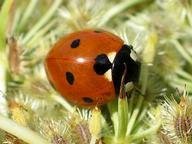Quiz Answer Key and Fun Facts
1. What often is a caterpillar's first meal?
2. What is the world's largest butterfly?
3. What is Australia's largest moth?
4. Which bee is well known for laying its eggs in the nests of other bees?
5. Centipedes have fangs.
6. What is a spider's web made from?
7. What often occurs when two mother wolf spiders meet?
8. When water spiders break the surface of the water and fall in, what do they normally do?
9. About just how big usually is a net-casting spider's net?
10. How does an adult bird-dropping spider catch its prey?
Source: Author
guypineapple
This quiz was reviewed by FunTrivia editor
NatalieW before going online.
Any errors found in FunTrivia content are routinely corrected through our feedback system.

